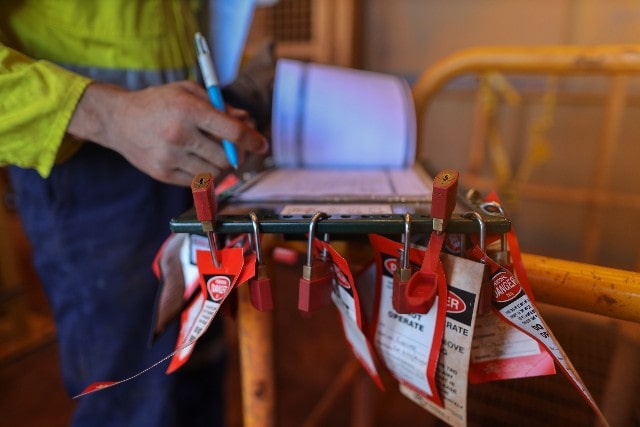How does your organization track all its equipment? Check-in/check-out procedures are useful, but they won’t give you much information on equipment usage or its value. Instead of keeping your team in the dark, improve the visibility of your assets with equipment tagging.
Equipment tags make it easier for organizations to scan, track, and maintain all the equipment in their business at scale. However, there are several factors you need to consider before you buy equipment tags. Let’s look at how equipment tags work as well as what you need to know before placing an equipment tag order.
Businesses label equipment with durable equipment ID tags and labels so they can track their equipment more easily. Employees can see a trove of information on a piece of equipment simply by scanning the barcode or QR code on the tag. Equipment tags also allow businesses to:
Industries like aerospace, commercial HVAC, manufacturing, and transportation rely on equipment labels to manage the thousands of assets they rely on to keep their business moving. They often use equipment tags for assets like:
Equipment tags are used in even the harshest industrial environments. As long as your business selects the right type of equipment tag for the job, you can rest assured that your assets will retain their labels — even with exposure to UV, extreme heat, cold, or chemicals.

Equipment tags should last the entire life of your assets without the need for re-labeling. Since this is an investment that could last you well over 20 years, it’s important to order the right equipment tags at the start. Consider these factors to enjoy greater peace of mind for the long term.
How many tags do you need? Talk to your team and get on the same page about which assets you’ll tag. You won’t need to tag all the equipment in your business, but you can order the right quantities with a better understanding of what you need to tag. This way, you order the right number of labels for your needs — not too many or too few.
What does your operating environment look like? You don’t want to use equipment tags that are incompatible with how you do business. You need to customize your equipment tags with the right substrate, finish, and adhesive for the environment.
For example, if the tags will be exposed to high temperatures, you need an adhesive that won’t break down when exposed to heat. Whether it’s UV, cold, rain, sand, or other sources of damage, you need to choose materials based on your environment.
Regardless of your operating environment, you need to choose durable materials that can last decades. Your equipment tag provider will likely offer materials like:
Metalphoto® photosensitive anodized aluminum is a popular and highly durable material. Metalphoto equipment tags offer an expected exterior lifespan of more than 20 years, even when subject to harsh operating conditions such as heat, humidity, long-term exposure to weather, UV and other outdoor conditions, salt spray, abrasion, industrial solvents, chemicals and more.
Keep in mind that the metal substrates you choose will have an impact on the performance and look of your equipment tags. When in doubt, speak to your equipment tag provider to choose the right materials.
Asset tracking software is the best way to monitor your equipment at scale. But if you’re using these systems, you must consult their requirements before ordering equipment tags. Make sure the barcode symbologies you print match up with your asset tracking software. This ensures that the tags you pick will meet the specifications of the system you’re using.
You might not need blank tags right now, but if you want the power to label or engrave tags internally, consider ordering extras. With blank equipment tags on hand, you won’t need to put in an additional order every time you want to label new equipment in your business. Waiting for a new label order can temporarily decrease your productivity, so equip yourself with blank tags to speed up the process.
Don’t lose sight of the essential equipment in your business. Quality equipment tags will streamline your team’s workflow and give you greater visibility into your assets — they’re a true win-win for your profitability and productivity.
However, not all equipment tags are created equally. Assess these five factors to ensure you order the right equipment tags for the job. When you want tags that will go the distance, go with MPC’s heavy-duty equipment tags. Request a no-obligation sample of our tags to see their quality firsthand.
Our sales engineers are experts in automatic asset tracking, tagging and identification,a nd can answer all your questions. Get in touch now.
Lets Talk ›